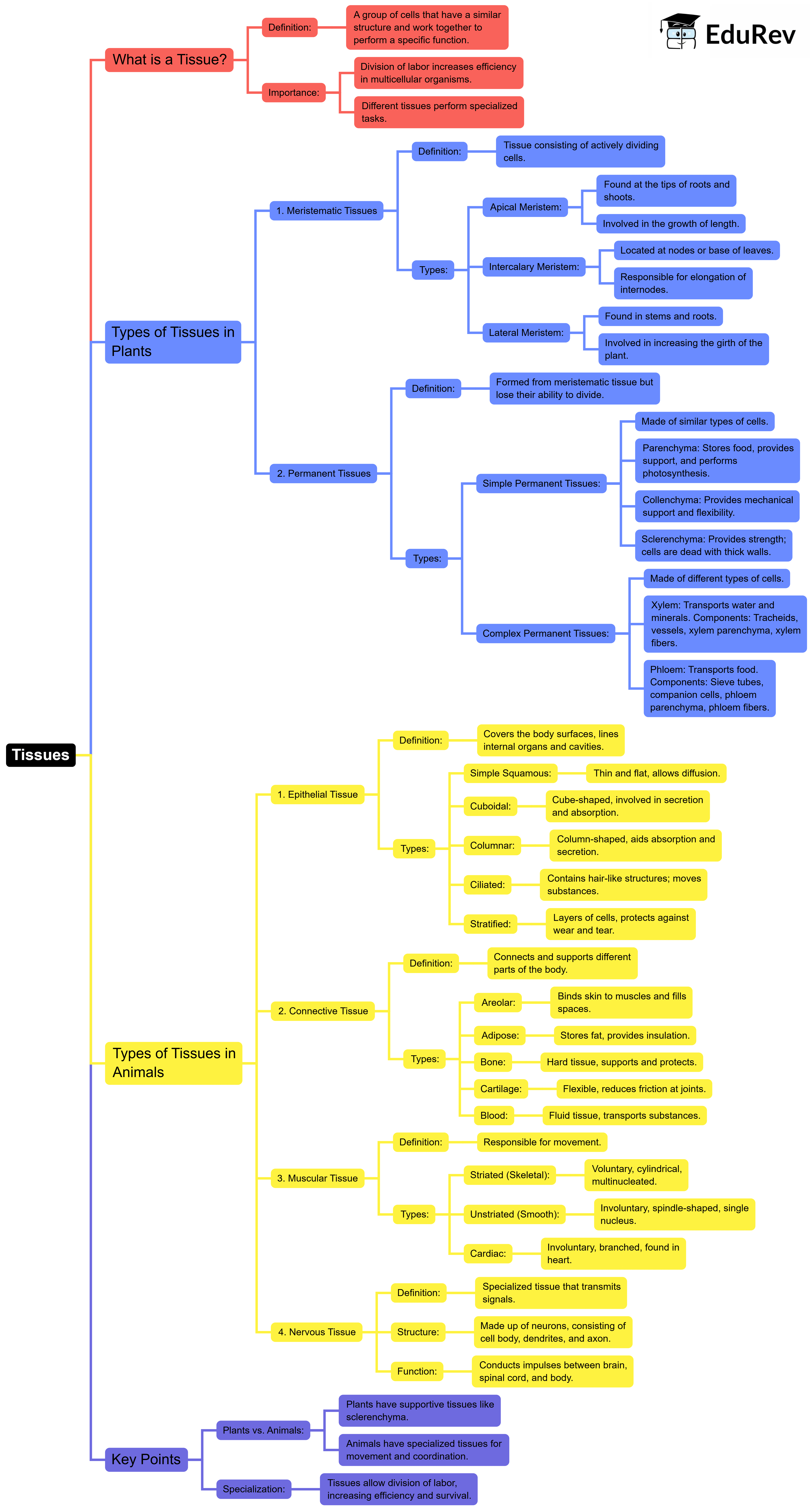Class 9 Exam > Class 9 Notes > Science Class 9 > Mind Map: Tissues
Mind Map: Tissues | Science Class 9 PDF Download

The document Mind Map: Tissues | Science Class 9 is a part of the Class 9 Course Science Class 9.
All you need of Class 9 at this link: Class 9
|
84 videos|541 docs|60 tests
|
FAQs on Mind Map: Tissues - Science Class 9
| 1. What are the main types of tissues in the human body? |  |
Ans. The human body is composed of four main types of tissues: epithelial tissue, connective tissue, muscle tissue, and nervous tissue. Epithelial tissue covers body surfaces and lines cavities, connective tissue supports and binds other tissues, muscle tissue is responsible for movement, and nervous tissue transmits signals throughout the body.
| 2. How do tissues develop and differentiate from stem cells? |  |
Ans. Tissues develop from stem cells through a process called differentiation, where stem cells become specialized cells that form specific tissue types. This process is influenced by genetic factors and the cellular environment, enabling the formation of diverse tissues like muscle, nerve, or blood.
| 3. What role do connective tissues play in the body? |  |
Ans. Connective tissues play several vital roles in the body, including providing structural support, protecting organs, storing energy (as in adipose tissue), and facilitating the transport of substances (as in blood). They also play a crucial role in immune response and tissue repair.
| 4. How can tissues be affected by diseases? |  |
Ans. Tissues can be affected by various diseases through inflammation, degeneration, or abnormal growth. Conditions such as cancer can lead to uncontrolled cell division within tissues, while autoimmune diseases may result in the immune system attacking healthy tissues, causing damage and dysfunction.
| 5. What techniques are used to study tissues in the laboratory? |  |
Ans. Several techniques are used to study tissues in the laboratory, including histology (the study of tissues under a microscope), immunohistochemistry (using antibodies to detect specific proteins), and tissue culture (growing tissues in vitro). These methods help researchers understand tissue structure, function, and disease mechanisms.
Related Searches

















